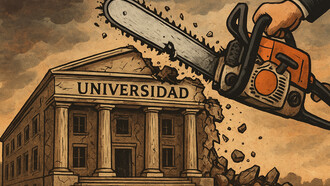A simple online search on what the definition of 'land' is, inter alia, provides two main responses, these are; land is any part of the earth's surface not covered by a body of water; the part of the earth's surface occupied by continents and islands, or land is also referred to as a country or state.1 In the latter context, the Preamble of the 1996 South African Constitution states that; we, the people of South Africa, recognise the injustices of our past; honour those who suffered for justice and freedom in our land.2 The reference to land is prevalent in political parlances wherein politicians advance certain ideological arguments, principles and positions.
These stretch from how the land ought to be distributed to and among the citizens of a country for various purposes including human settlements, commercial adventures such as farming, mining, building of infrastructures, construction of industrial facilities, etc. Land represents a sense of belonging and identity to human beings and states. The former use their ethnic or nation heritage to describe and define who they are and where they come from, that is, which part of the country (marked by land location) they are from. For some states, land is used to mark territorial boundaries and national borders, in other words, it delimits the political sovereignty of one state over another’s territory.
Why is the land so important and such a highly contested political issue in many countries? The response to this question can be provided from different but interwoven perspectives and philosophies. For those who believe in the existence of God and His creation, would profess that Earth is created on land which is the planet inhabited by humans, therefore, the land exists for occupation by the most special species created in the image of God, the people. In fact, the holy scripture affirms that from the land humans were created and shall return upon their death. Environmentalists would argue that people are not the only occupants of the land or earth, but this is also a space shared with other creations such as animals, plants, and everything else that lives on it. Thus, the environmentalist would add, the land has to be cared for and protected against any form of abuse and misuse by any of the species that owe their being to it.
Entrepreneurs would state that, for them to establish an enterprise they need access to suitable land for their kind of adventure, not just any land, the one that will meet their business demands and requirements. In a nutshell, land is the source of life for many creations and human ventures. It is for this reason that nations contend within and between country borders for access to land and those who have power and might over others, would even ensure that they secure a lion’s share of the land for themselves and their posterity. Literally, nothing can and will exist on the surface of the earth without the land. No homes will be built, no hospitals to care for and cure patients, no businesses to stretch the imaginations of entrepreneurs, the list goes on.
Even the so-called online businesses or paperless systems, someone uses resources and materials available in the land to house their creation and operations. Against this background, the discussion in this article reflects on the land question in South Africa in the past 30 years. It must be stated that the discussion in this article just scratches the surface insofar as the land question is concerned, it is far much more complex and multifaceted than this piece can justifiably cover.
The opening provision of the infamous, and others refer to it as a notorious South African Act No. 27 of 1913, in short, The Land Act, categorically made the intention of the racist colonial government explicit that, the Act sought to regulate the purchase and leasing of the land by natives (citizens) and other persons other than natives. It must be hastily contextualised that, the latter group was legally bound through the Land Act to follow certain laid out procedures on how to deal with the natives insofar as the land question is concerned. Martin Luther King Jr. described the type of law the Land Act was as unjust, because it was a kind of law “not rooted in eternal law and natural law”. According to King, a just law is the one that “uplifts human personality, any law that degrades human personality is unjust”. The Act was passed on the fateful day of 19 June 1913, and its cardinal objective was to drive the natives out of arable, fertile, and humanly habitable land to the peripheries of the territory of the country.
Many scholars and commentators have written extensively about the land question in South Africa. Some substantially argue that the genesis of the current developmental challenges in the country are deeply rooted in the 1913 Land Act, hence they regard it as the law of dispossession. According to the 30-year review report, over 3.5 million native people were forcibly removed from their land, and the racist government of the day secured 87% of land ownership for whites and majority Black natives were left with a meagre 13% of the land. The latter percentage was only increased after two decades from 7% of the 1913 Land Act, to 13% through the 1936 Native Trust and Land Act of South Africa.
In fact, clause 1(1) of the Land Act states that except with the approval of the Governor-General, a native shall not enter into any agreement or transaction for the purchase, hire, or other acquisition from a person other than a native, of any such land or of any right thereto, interest therein, or servitude thereover; and a person other than a native shall not enter into any agreement or transaction for the purchase, hire, or other acquisition from a native of any such land or of any right thereto, interest therein, or servitude thereover.3
Clearly citizens of the land were not only driven out of the liveable areas within the territory of the state, but they were also prohibited from even acquiring or purchasing profitable and pristine land which was reserved for the white people and the latter were also not legally permitted to enter into any form of transaction with the natives. Black people were even restricted in terms of their movements within the country unless they were able to prove that they were employed or servants of white people in their whites-only communities. There is no shadow of a doubt that this grossly unjust and draconian law deepened racial divisions and segregation of the people in the country. It was a law whose intent and object were premised on wicked and despicable human reasoning. South Africans, more than 100 years since the passing of the Land Act, still attribute to it, the nation’s current challenges of endemic poverty in all its different forms, inequality which is particularly acute and largely negatively affecting the natives segment of population and souring unemployment.
Since the dawn of democracy on 27 April 1994, the government led by the African National Congress and its alliance partners, the South African Communist Party (SACP) and the Congress of Trade Unions, has made significant strides to redress the injustices injected by the Land Act. Some of the legislative reforms passed to redress the land question include The Abolition of Racially Based Land Measures Act No.108 of 1991 which came into effect on 30 June 1991. The 1991 Act brought about measures to repeal the racists' 1913 Land Act. The 1991 Act made provisions to; repeal or amend certain laws so as to abolish certain restrictions based on race or membership of a specific population group on the acquisition and utilisation of rights to land; to provide for the rationalisation or phasing out of certain racially based institutions and statutory and regulatory systems; regulated the norms and standards in residential environments; made provision for the establishment of a commission under the name of the Advisory Commission on Land Allocation and provided for matters associated with it.4
Other legislative measures following the 1991 Abolition of Racially Based Land Measures Act include the Provision of Land and Assistance Act of 1993, Restitution of Land Rights Act of 1994, Act 108 of 1996 (The Constitution), Spatial Planning and Land Use Management Act of 2013. These pieces of legislation enabled the post-1994 government to implement the much-needed transformational reforms in the country’s land question. Key considerations were issues related to settlement of people closer to their places of work and economic activities.
Issues related to land dispossessed from communities by the 1913 Land Act were to be addressed as well as better and orderly planning for use and management of land for development purposes. The post-1994 government, to some degree, drove a transformational and reform agenda which, among other things, restored the dignity of natives through the Reconstruction and Development Programme (RDP). Through the programme, the government built formal houses for the natives in urban and semi-urban areas. Though the programme has not been perfect and is still operational to this day, it provided people with better shelter than shacks and slums to which the natives were condemned to by the successive racist regimes.
Notwithstanding the positive contribution of the RDP programme to restoring the human dignity and rights of property ownership to the natives, it has not succeeded in eradicating slums and informal settlements in urban areas. The reasons for this state of affairs are varied including poverty which forces some people to prefer to sell or rent the free properties they get from government in exchange for an income. The challenges associated with migration, both internal and international dimensions, also contribute to complexities associated with the land question together with other interlinked basic services such as housing, water, sanitation, etc. Section 25 of the 1996 Constitution protects the property rights of citizens against arbitrary and discriminatory laws. The same section also empowers the state to pass legislative measures to redress the racial injustices of the past. It is this section 25 of the Constitution that has been a bone of contention between the government, the opposition political parties and interests groups on the land question, which has dominated discourses on land in the country.
The government has implemented a number of land reform and restitution measures since 1994. Some claims from the people who were dispossessed of their land by the apartheid government were compensated through the restitution process, but some of these remain outstanding due to a number of reasons. Parliamentary debates have revealed that some of the challenges confronting the government include disputes among the claimants, capacity constraints in investigating and researching the claims, and high prices charged by the government to current owners of the land identified for redistribution.
In relation to the latter, some politicians and activists have been arguing that the government should invoke the provisions of section 25 (7) and (8) of the Constitution which state that; (i) a person or community dispossessed of property after 19 June 1913 as a result of past racially discriminatory laws or practices is entitled, to the extent provided by an Act of Parliament, either to restitution of that property or to equitable redress; and (ii) no provision of this section may impede the state from taking legislative and other measures to achieve land, water and related reform, in order to redress the results of past racial discrimination, provided that any departure from the provisions of this section is in accordance with the provisions of section 36(1).5 The latter section deals with the limitation of all the rights in the Constitution.
One of the arguments advanced by the racists members of parliament who passed the 1913 Land Act was that the law was necessary as a conflict prevention measure between the natives and white people. However, that line of reasoning did not hold in the minds of the dispossessed Africans who knew that the land was required by their white counterparts for economic and commercial benefits, especially farming and agricultural activities. There is no gain saying that, till this day, the majority of the commercial land in South Africa is still owned by white people 30 years after the dawn of democracy. Currently, there are significantly reduced incidents of conflicts or violence motivated by racism in the country.
The 2017 Land Audit revealed that a staggering 26 663 144 hectares or 72% of the total 37 031 283 hectares of farms and agricultural holdings are owned by white people. Native Africans own the smallest share (4%), even below the minority groups of the coloured who own 15% and Indians with 5%, respectively. Land: the 30-year review of South Africa’s democracy reports that an estimated 2.1 million households live in informal structures, and these are mostly located in urban areas and cities. The informal settlements are growing rapidly due to urbanisation and influx of people from neighbouring countries who migrate to the country in search of better lives and find themselves accommodation and shelter in the more affordable or cheaper informal settlements than formal settlements where they have to pay rent and other municipal services.
The rapidly growing population in the cities presents complicated challenges to the local government due to increasing service delivery demands as well as the shortage of suitable, well-located land for low-income households. The surge in urban population has also escalated property prices making formal houses and land in and around cities unaffordable to the low-income household. Another trend in the country is the growing development of prime properties in rural areas financed by the working middle class who prefer to own their dream homes outside the cities thereby saving on city property rates and charges and on long-term repayments of home loans with high interests rates charged by the commercial banks. In the cities, the middle-income households either own or rent smaller properties such as apartments or flats.
In rural areas, people have access to land but they lack the necessary support to work it. The 2022 Census Report confirms that the population of people participating in agricultural activities is declining moving from 19,9% in 2011 (2 879 590), to 13,8% (2 463 429) of all households in 2022.6 The report also informs that the majority of households are Black Africans at 90% and the whites at 5.2%. Intriguing though is that the Black population are mainly involved in agricultural activities for their own survival and consumption, whereas the white households produce products at a commercial scale. These trends are attributable to the legacy of the 1913 Land Act which saw generations of white people benefit and accumulating generational wealth through commercial agricultural activities such as agro-processing, growing livestock, poultry, and crop-farming. This is a major political concern for the majority of the Black population that 30 years on, the apartheid patterns of economic benefits for whites still persist whilst the Black people still languish in poverty and landlessness.
What is to be done? There is no doubt that the government and parliamentarians are empowered by the supreme law of the land to develop measures to redress the racial inequalities of the past. Though this will not be achieved through inherent goodness of the people without legal and legislative strict measures, the white segment of the population needs to make concessions to the government by making some of the commercial land they own for available for redistribution, redressing the apartheid racialised white privileges and rights on land ownership. Among many proposals to deal with this challenge is the development of secondary cities as part of the national government’s development strategy. Economic activities ought to be shared and spread throughout the country to alleviate pressure on the metropolitan and big cities.
Deliberate and intentional development of rural areas should be seriously considered and prioritised as part of the solution to address the land use and management challenges. In South Africa, over the past 30 years, the government has implemented policies and programmes that has brought basic services such as water, sanitation, and electricity to rural areas. However, due to scarcity of jobs and employment opportunities, people continue to migrate to cities. There is available academic literature that proves people’s preferences to stay in rural areas only if they were to be gainfully employed. Some of the advantages of living in rural areas include the vast acres of land available for formal human settlements, agricultural, building of social infrastructure for provision of services such as health, education, sports and recreation, etc. Land ownership, use and management will always be a top priority for national development, but the commitment to fight for land ownership and rights should be matched with the equal zeal and investment in the resources required to develop and maintain it.
Lastly, I wish to caution South Africans to assiduously manage their frustrations about the slow pace of land reform, thus, derailed social justice. The thoughtfulness that is critically important in bringing about transformation in land ownership, use, and management, cannot be hollowed-out at the altar of political expediency. The citizens of the country’s northern neighbour, Zimbabwe, grew impatient with the snail pace of land reform and decided to take things into their own hands and simply occupied the commercial land without following legal or procedural processes, and as the saying goes, the rest is history.
Notes
1 Dictionary, Land, 2024.
2 Constitutional Court, Constitutional of the Republic of South Africa, 1996.
3 South African Government, The Natives' Land Act of 1913, 2024.
4 South African Government, Abolition of Racially Based Land Measures Act 108 of 1991, 2024.
5 Constitution of the Republic of South Africa, Introducing a new Constitution for the Republic of South Africa, 1996.
6 Department of Statistics, South African Government, Census 2022, 2022.














